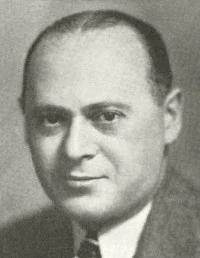Serving the worldwide community of radio-electronic homebrewers. Providing blog support to the SolderSmoke podcast: http://soldersmoke.com
Wednesday, June 30, 2021
10 Pole Crystal Filter Passband as Seen in Antuino and NanoVNA
Tuesday, June 29, 2021
Jack NG2E's Pebble Crusher
Check out NG2E's Pebble Crusher homebrew transmitter. Doug DeMaw would be enormously pleased.
Jack will no-doubt have this 250 mW rig on the some peak along the Shenandoah Valley, handing out QSOs to SOTA fans.
Jack's blog page has a really nice video on this project:
https://jackhaefner.blogspot.com/2021/06/pebble-crusher-40m-xmtr.html
Saturday, June 26, 2021
SolderSmoke Podcast #231 -- Travel, SST, Mythbusting, Filters, TIAS, NanoVNAs, DC RX in SPRAT, Drake A Line, Spillsbury, STICKERS! Mailbag
Thursday, June 24, 2021
Radio Netherlands -- Bonaire Relay Station
Friday, June 18, 2021
Jean Shepherd on CW, and Strange Propagation -- QRP!
Thursday, June 17, 2021
The Stubborn Myth about USB and LSB
It has been repeated so often and for so long that many of us have come to believe it. I myself believed it for a while. Like many myths, it has a ring of truth to it. And it is a simple, convenient explanation for a complex question:
Why do ham single sideband operators use LSB below 10 MHz, but USB above 10 MHz?
Here is the standard (but WRONG) answer:
In the early days of SSB, hams discovered that with a 9 MHz SSB generator and a VFO running around 5.2 MHz, they could easily reach both 75 meters and 20 meters (True). And because of sideband inversion, a 9 MHz LSB signal would emerge from the mixer as an LSB signal (True), while the 20 meter signal would emerge -- because of sideband inversion -- as a USB signal (FALSE!) That sideband inversion for the 20 meter signal explains, they claim, the LSB/USB convention we use to this day.
Why this explanation is wrong:
There is a very simple rule to determine if sideband inversion is taking place: If you are subtracting the signal with the modulation FROM the signal without the modulation (the LO or VFO) you will have sideband inversion. If not, you will NOT have sideband inversion.
So, you just have to ask yourself: For either 20 or 75 are we SUBTRACTNG the Modulated signal (9 MHz) from the unmodulated signal (5.2 MHz)?
For 75 meters we have: 9 MHz - 5.2 MHz = 3.8 MHz NO. We are not subtracting the modulated signal from the unmodulated signal. There will NOT be sideband inversion.
For 20 meters we have 9 MHz + 5.2 MHz = 14.2 MHz. NO. No subtraction here. No sideband inversion.
So it is just arithmetically impossible for there to be the kind of happy, easy, and convenient USB/LSB situation described so persistently by the myth.
---------------------------------
We discussed this several times on the podcast and in the blog:
https://soldersmoke.blogspot.com/2015/05/sideband-inversion.html
https://soldersmoke.blogspot.com/2012/05/usblsb-urban-legend-debunked.html
This myth shows up all over the place:
We see the myth here:
http://n4trb.com/AmateurRadio/Why%20The%20Sideband%20Convention%20-%20formatted.pdf
Here the web site owner warns that this is "highly controversial." Really? Arithmetic?
The myth is very old. Here is a clip from a 1966 issue of "73" magazine:
https://worldradiohistory.com/
Finally, to my disappointment, I found the myth being circulated by the ARRL, in the 2002 ARRL Handbook page 12.3:
Tuesday, June 15, 2021
Hi Def 360 Degree Panorama from the Mars Perseverance Rover
Monday, June 14, 2021
M0NTV's Latest FB SSB Transceiver
Santo Domingo Shack on 12th Floor Balcony -- SST QRP CW
Saturday, June 12, 2021
Good News! The Termination Event May Be Coming Soon! Solar Cycle 25 Could Rival Cycle 19!
Thanks to Thomas over at SWLing Post for alerting us to this important news.
Thursday, June 10, 2021
Tom's Receiver -- A 20 Meter Superhet Built From the Junkbox
Wow, this is really an amazing project. It is so good that I'd like to believe that it is really "all our fault," but the credit obviously goes to Tom, the very intrepid builder. In a more just world, Tom would be given a ham radio license solely on the basis of this project. Great work Tom. We look forward to more Solder Defined Radios from your workbench.
I stumbled across your podcast a few years ago. I had no interest in
amateur radio, I was just looking for an electronics podcast that
actually discussed electronics (naming no names here, obviously).
Well, the inevitable happened, and some of your enthusiasm rubbed off
on me. I now find myself humbly enclosing a photograph of my first
homebrew receiver for 20m.
The project was one of those "spontaneous construction" affairs,
triggered mainly by breaking up an old satellite receiver (I've
honestly no idea what it was for) which yielded up several SBL1s and a
10.7MHz crystal filter - these form the key elements of the new
receiver. It's a full SDR (solder defined radio) of a conventional
single-conversion superhet arrangement. The chief abnormality is that,
because the IF filter is as wide as the proverbial barn door, I only
use "one edge" - the other half of the passband being provided after
conversion to baseband. Of course, that only works if there are no
massively strong stations in the 6kHz above where you're listening,
but it seems to be ok most of the time. It does give me the advantage
of being able to adjust the lowpass point of the AF signal by
adjusting the BFO, which is nice.
You'll notice there's a lot of "digital nonsense" in the picture, for
what's supposed to be an analogue radio. This "supervises" the two
VCOs: There is an FPGA which implements a pair of frequency meters and
an STM8 microcontroller which is in charge of adjusting the control
voltages to keep the VCOs where they should be. It's all slightly
roundabout because I wasn't clever enough to design a PLL which would
give the required resolution (and I wanted to do something "more RF"
than throw down a DDS chip).
This gives me stability as well as fancy bells and whistles, like
numeric readout, tuning info via RS232, automatic scanning and
frequency presets. I've used a (cheap) industrial/automation style
encoder for the tuning control, which gives a lovely analogue-like
action.
Despite my best efforts (and a lot of ferrite in strategic places) I
wasn't able to keep all the digital spurs out of the receiver. So I
devised a dirty hack by way of a button which will shift the MCU an
DAC clocks to a different frequency. I can't remove the spurs, but now
I can hide them!
So far I've played with a "long" wire and a little shielded loop for
antennas - I'm in a first floor flat with a lot of noise locally, and
my plan is to get a loop up in the loft space (so the next project
might be a rotator!). I fancy maybe seeing if I've space for an
inverted V, too.
You'll notice that I've not attempted a transmitter. That, of course,
is because I'm not yet a licenced ham! However, I'm intending to put
that right sometime later in the year. Then - who knows - I might make
a contact!
Thanks for reading (although really it's the least you could do given
that this *is* all your fault) and I hope you've enjoyed hearing about
all the trouble your little podcast has got me into.
Keep up the good work gentlemen,
73 from South-West England.
Tom.
PS. I also have a copy of Bill's book, which I've very much enjoyed.
Wednesday, June 9, 2021
Pete's Drakes
Monday, June 7, 2021
Dino's Test Gear -- KL0S at FDIM 2021
Sunday, June 6, 2021
VK3HN on Scratch Building (Video)
Lots of wisdom and good info in Paul Taylor's presentation.
Paul's comment on the impact of abundant LiPo power in the field -- we no longer have to scrimp and optimize power consumption -- was very interesting.
And thanks for the nice mentions of the SolderSmoke podcast.
Thanks Paul!
















